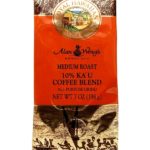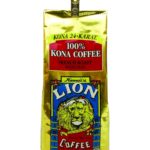Shortly after you start home roasting coffee you'll come face to face with a near-empty bag of coffee. You'll look at it and decide it's too little for a single batch of coffee. At this point you can either buy more coffee from that same crop, throw it away, or experiment with blending. Blending can be broken down into two different camps: blending for espresso and blending for non-espresso (regular coffee).
My experience with blending has taught me that coffee blending is far easier and more forgiving than blending for espresso. Building an espresso blend is likely to take many attempts before you get the flavor profile you desire. Most of my regular coffee blends were successful on the first try. Ultimately, espresso blending is a separate topic. This article will cover blending for regular coffee.
Home Roasters Are Different From Commercial Roasters
Home coffee roasters have different challenges from commercial coffee roasters. Home coffee roasters roast less coffee, roast less frequently, and with rare exceptions offer far less control over the temperature profile throughout the roast, especially when roasting outdoors. I have found that coffee blending can mask and overcome some of the problems home roasters experience.
Now that I've been home coffee roasting and blending for ten years, I've developed a set of patterns that I've used to build coffee blends. Since a home roaster will always have different amounts of different beans, I tend not to use fixed recipes. I've found fixed recipes work better for espresso. Coffee blending is like art class in school – you see what materials are available in the supply closet and then do your best with what you have.
Weight and measure your coffee blend.
Just a Pinch Blend
Often a blend is forced when you find yourself just an ounce or two short of completing your roast. You didn't intend on blending, but you ran out of beans. After noticing many commercial roasters were using Guatemalan coffee in their blends, I started keeping a bag handy.
I've noticed that Guatemalan never tries to dominate the flavor of the beans it is blended with. It instead highlights the flavor of the other crops in the blend. Thus my advice for home coffee roasters is to always have some Guatemalan handy.
Checkerboard Blend (2 Crops)
Anyone that has roasted multiple roasts back-to-back has noticed a trend that the machine gets hotter and each subsequent roast gets faster. Depending upon what you use to roast and ambient temperature, you might find the first roast was too slow and the second roast was too fast. Neither batch will taste great on its own, but blended together it has greater flavor. The “Checkerboard Blend” can be done in two manners.
- Same Crop. Find a forgiving bean that tastes good roasted darker and lighter. Take the first roast lighter and second roast darker. Recommended beans: Brazil, Colombia, Sumatra.
- Two Crops. Same as above, but this time pick your flavor bean first and the body bean for the second roast. Recommended flavor beans: East Africa (all), Central America (all). Recommended body beans: Brazil, Colombia, Sumatra.
Three-Crop Blend
Many of the great blends I've tried had use three different crops. My pattern for this blend is to fill three roles: body, bright flavor, subtle flavor. Three beans, three roasts.
- Bright Flavor (light roast): East Africa (Ethiopia, Kenya, Rwanda)
- Subtle Flavor (medium roast): Central America (Panama, Costa Rica, Guatemala, Honduras)
- Body (darker roast): Brazil. Colombia, Sumatra
Keep the three roasts in three different containers. Now experiment brewing in a press pot with different ratios. Doing this will enable home roasters to quickly figure out what flavors they wish to include and those they wish to change.
Faking Freshness Blend
Commercial roasters can average the expected intake of all their customers and clients and can estimate how much to roast without running out. They can even afford to have some waste, and if they notice they will run out sooner, they can do an emergency roast. Home coffee roasters can have wildly varying coffee intake and schedules that prevent always having the optimal amount of coffee handy. Although roasting too little is a problem blending can't correct, I've discovered a hack that corrects over-roasting.
Let us say you still have some coffee that is starting to lose its freshness, but you don't want to throw it out just yet. I've been known to roast a single batch of either the same bean or Guatemalan coffee and add it to the older coffee. I call it “punching up” the blend. Sophisticated palates will be able to detect something is off, but most won't. Blending older coffee with a small amount of 1-day-old coffee can extend the overall blend by a few more days. I'm sure there are doubters out there, but I've had years of success doing this trick with many people.
The 7 Day Pre-Blending Trick
I saved the best tip for last. The biggest problem with constructing blends is that different beans roast at different rates. Some are faster and some are slower. So you either under-roast some or over-roast others. Since commercial roasters work with larger volumes, they have the freedom to roast each component of the blend separately to peak and then post blend. We homeroasters can't do that or we end up roasting way too much coffee or constructing blends with just a few equally portioned components.
The solution I learned is to pre-blend the green beans and then let them sit for a week. Doing this will even out the moisture levels. The result is the beans roast at the same speed. This single tip has greatly increased the quality of my homeroasted blends, especially espresso where a single component may only represent 5% of the blend. This especially works well when one of the beans is robusta. However, it does not work when mixing decaf with regular coffee beans.
When Not to Blend
If I buy a nice single origin or island coffee I will not use it in a blend. Special coffees deserve special attention and shouldn't be used in regular coffee blends. Blending the expensive special stuff is a bit like pouring cola over a single malt scotch.
Conclusion
The blending needs of the home coffee roaster are less about designing perfect recipes than establishing patterns for working with limited supplies. I hope my fellow home roasters learned a trick or two that they can incorporate into their own blends.
The post Coffee Blending For the Home Roaster appeared first on I Need Coffee.
Source:: Coffee Blending For the Home Roaster







